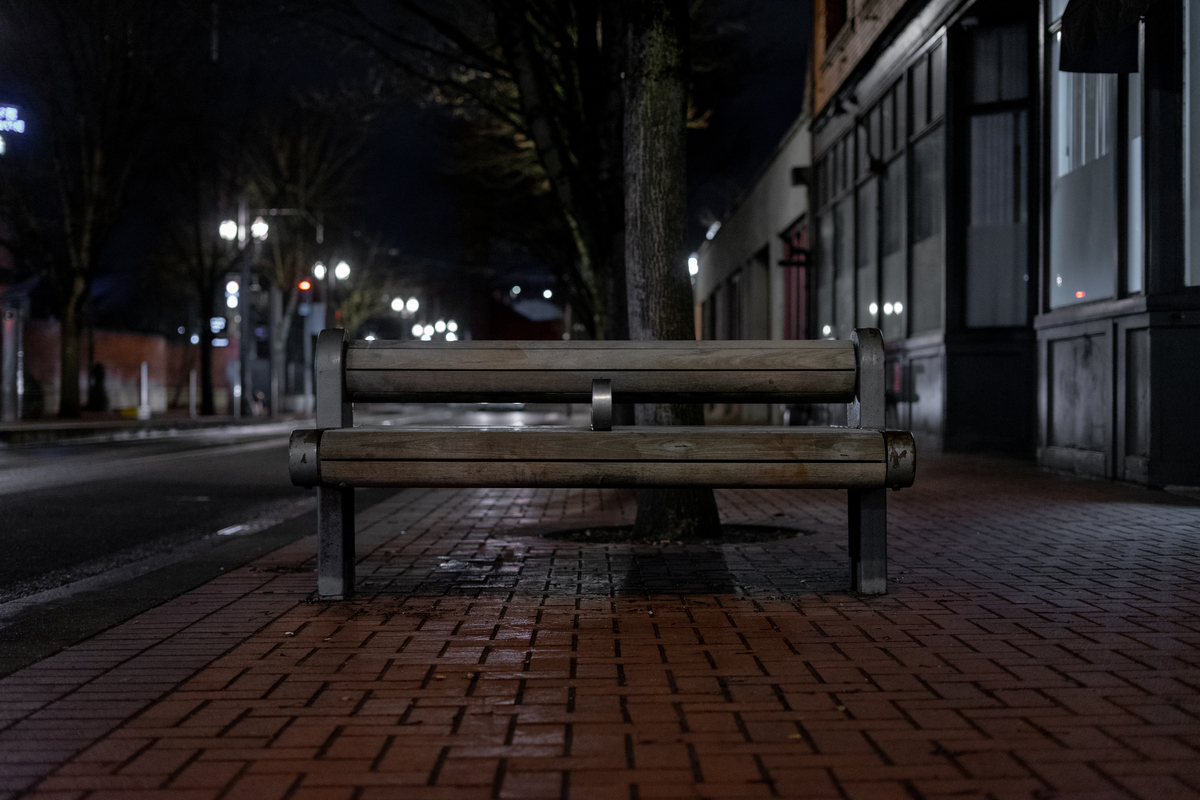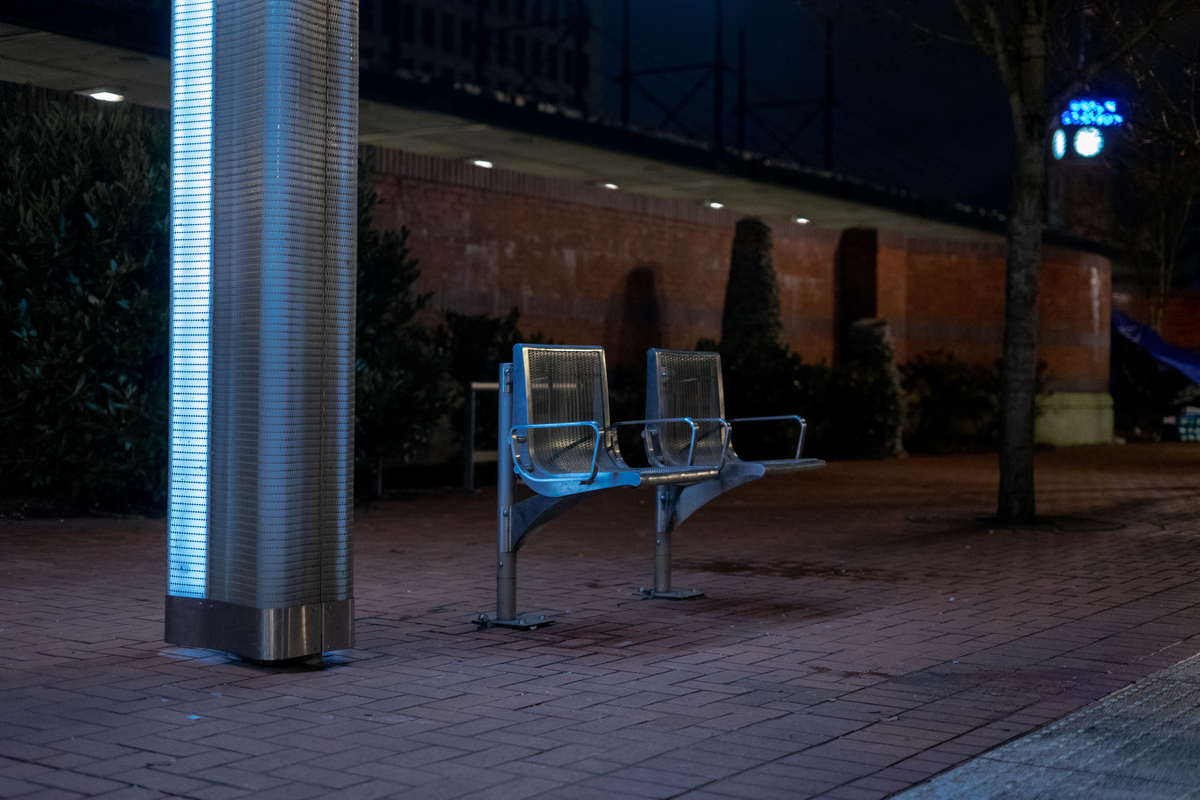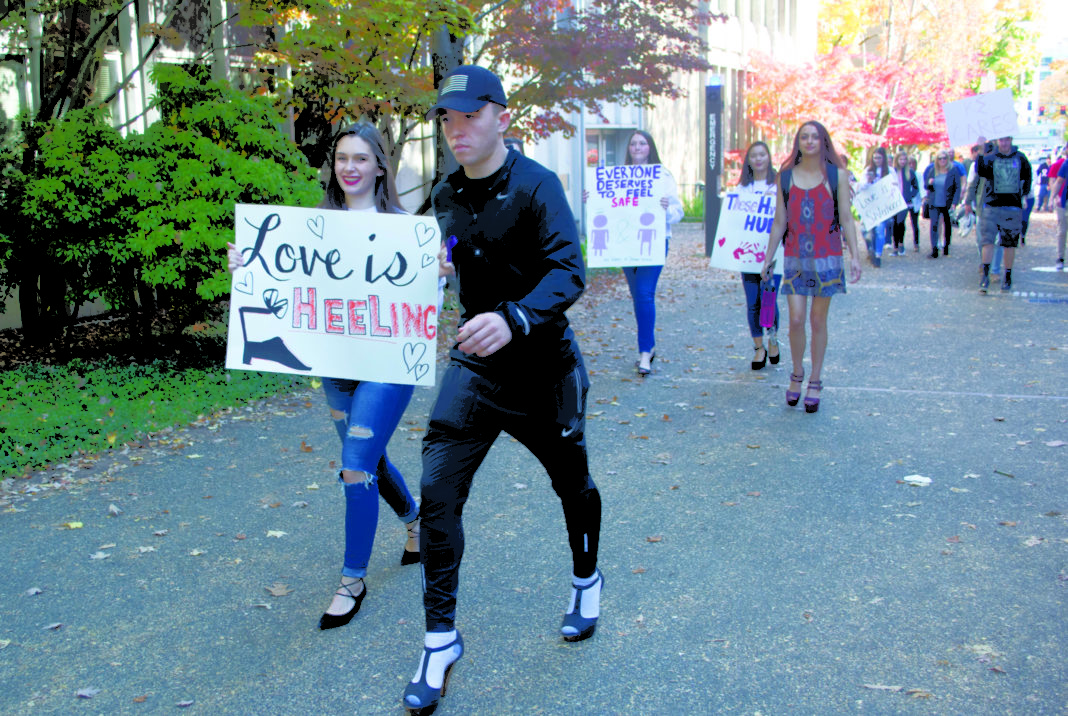Portland is a city of cruel hypocrisies. The white liberals who run the city urge City Council to police the houseless with a brutal efficiency that will remove them from their sight, all in order to restore some false ideal of what Portland should look like—one common tool that anti-development Portlanders, or NIMBYs (short for “not in my back yard”) like to use is hostile architecture. Examples of this include private citizens illegally installing planter boxes or bike racks to block sidewalks against campers, and seating that is either too uncomfortable to use or entirely removed. Targeting the houseless like this is not only inhumane, it also attacks Portlanders of all kinds and strips away any sense of communal space.
Bigoted urban planners have utilized hostile architecture for centuries to exclude people of color from public spaces and degrade their quality of life. One infamous example comes from Robert Moses, the man who is arguably responsible for how New York City is designed today, according to an article in the Yale Law Journal titled “Architectural Exclusion: Discrimination and Segregation Through Physical Design of the Built Environment.” Moses purposefully made bridges that ran over Southern State Parkway—a thoroughfare that ran to his newest beachside park—too short for buses to pass under, at a time when public transit was the main transportation method for Black New Yorkers.
Today, these same slimy, two-faced methods are used against Portland’s houseless population. The aforementioned planter boxes placed along the sidewalk to block tents, and dozens of useless bike racks installed for the same purpose, are two examples of housed Portlanders targeting houseless Portlanders. These acts send a strong message to our houseless neighbors that their comfort and their lives do not matter—that they aren’t seen as fully human.
While this attitude is often driven by anti-homeless classism, many housed Portlanders are affected as well. People who are elderly, pregnant, use wheelchairs or otherwise have mobility challenges are actively pushed off sidewalks and other public spaces when they are blocked by these obstacles. Removing seating or making seating more uncomfortable reduces the accessibility of public spaces for everyone.
Michael Mehaffy, a local urban planner with decades of experience working in public space, summed up the issue while speaking with OPB. “I think it’s part of a broader problem of the erosion of public space, the privatization of public space,” Mehaffy said. “People who are essentially excluding other people from public space, and ultimately that means it’s not public space if some members of the public can’t use it.”
Speaking on the far-reaching consequences of this trend, Mehaffy said, “This is part of a broader problem that we have really nationally and internationally, is the way public space is being eroded and privatized and a lot of it is just because of the way we use cars so much rather than getting out and walking…” In other words, privatizing public space damages the community at large and hinders what makes a city great.

“As a researcher in public space,” Mehaffy continued, “I think that’s more serious than we recognize, because the public space is really the engine of the creativity of cities. It’s the way we sort of interact with people that we don’t know, and ultimately it is the creativity of cities that occurs within the public spaces and within the nearby private spaces. And if we lose that, we’re losing something profoundly important.”
Public space is extremely important to a society. It should be enough to stop hostile architecture and anti-houseless programs simply because it’s the right thing to do. However, if you don’t sympathize with our houseless neighbors, perhaps your grandma that uses a walker or your pregnant friend is enough to reconsider how these policies affect a community.
So, if hostile architecture is so bad, then what should we do?
We could put people in homes. It’s the straightforward, obvious answer to the issue. Instead of doing that, however, on Nov. 30, Portland City Council allotted $27 million for the purpose of setting up strictly regulated camps for houseless Portlanders, complete with private security patrols. Clustering people that society views as undesirable into camps has, historically, never been a good idea.
Instead of burning $27 million to get homeless people out of white liberals’ faces, the city could take that money and put it towards putting people in homes. Just look at Houston, a city that has reduced its houseless population by 63%—a total of 25 thousand people—since 2011. Their strategy? Put people in affordable housing. Their program cost $100 million, but their city is far larger and has far more houseless. $27 million could be the start towards a similar program—but instead, it’s used to get the houseless out of view of the rich.
Hostile architecture is the tip of the iceberg of anti-houseless measures enacted in Portland. It not only harms the houseless, but all those who have mobility difficulties. Destruction of public space leads to the destruction of any sense of community left in the city. There are solutions, but City Hall doesn’t care about them. Mayor Wheeler, the City Council and the Business Alliance seem satisfied to show the city that property values and neighborhood aesthetics matter more to them than human lives.






